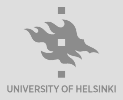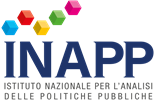Accessibility and sustainable tourism: a kaleidoscope of issues and perspectives. Introduction
Abstract
Accessibility and sustainability have become two of the most contemporary issues in the tourism industry (Buhalis and Darcy, 2011; Edgell, 2019).The World Health Organization (WHO,2011) estimates that worldwide 1 billion people experience some form of disability, representing about 15% of the world’s population. Adding spouses, children and caregivers of persons with disabilities, more than 2 billion people, representing almost a third of the world’s population, are directly affected by disability(ibidem). This estimate is expected to increase due to population ageing, the spread of chronic diseases, and greater ease in identifying and measuring disabilities (ibidem).References
Buhalis D. and Darcy S. (Eds.), Accessible tourism: Concepts and issues, Bristol, Channel View Publications, 2011.
Edgell D., Managing sustainable tourism: A legacy for the future, third edition, New York, Routledge, 2020.
Liu Z., “Sustainable tourism development: A critique”, Journal of sustainable tourism, 11, 6, 2003, pp. 459-475.
Peeters P., Gössling S., Klijs J., Milano C., Novelli M., Dijkmans C., Eijgelaar E., Hartman S., Heslinga J., Isaac R., Mitas O., Moretti S., Nawijn J., Papp B. and Postma A., Research for TRAN Committee – Overtourism: impact and possible policy responses, Brussels, European Parliament, 2018.
UNEP and WTO, Making tourism more sustainable, a guide for policy makers, Paris and Madrid, 2005.
UNWTO, Accessible Tourism for All: An Opportunity within Our Reach, Madrid, 2016.
WHO, World Report on Disability, Geneva, 2011.
Downloads
Published
Issue
Section
License
The Author assigns to the Nuova Cultura and to Italian Association of Geography Teachers all rights under copyright that can exist in and to the submitted paper. The Author warrants that the paper and images (photos, maps, graphs etc.) are original and that he/she is the Author of the submitted contribution and its parts; in the case of images taken by other publications, the Author must provide a specific authorization and must pay in advance any copyright.

This work is licensed under a Creative Commons Attribution 4.0 International License.












